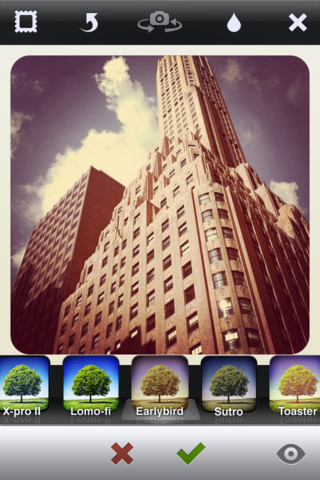Earlier this week, Facebook bought Instagram, a mobile photo filtering and sharing app, for a whopping 1 billion dollars. Not bad for a 1 and a half year old company with only 13 employees.
Here at The Clix Group, a St Louis social media marketing firm, this purchase raises a couple questions. First, the move is somewhat perplexing considering just four days prior, venture investors valued the app at $500 million. So why did Mark Zuckerberg purchase Instagram at twice its valuation? Second, Instagram is neither the first nor the only app to serve its purpose. So why has Instagram experiences such wild success?
Perfecting rather than investing
Instagram did something that successful “Big Thinkers” have been doing for hundreds of years; As Alex Goldfayn, CEO of the Evangelist Marketing Institute put it in “How to Think Big in Business,” his recent article on Mashable.com, they perfected rather than invented. Goldfayn points out several modern brands that did just this including Amazon, Trader Joes, Netflix and Apple.
Think about every category Apple has dominated: smart phones, tablets, music downloading, software distribution. Apple wasn’t first to any of those categories, but it quickly perfected each.
Similarly, Instagram took the photo filter concept already available on apps like Hipstamatic, and rather than duplicating it, they thoughtfully perfected it. Instagram allows users to take a picture on their phone, apply a variety of vintage filters and boarders, and instantly publish it online.

After a user takes a photo with Instagram, they can try on a variety of retro filters and boarders before publishing.
1. Instagram made photo filtering available to anyone
Photo effects are nothing new. Photographers have been enhancing and manipulating photos since the invention of the daguerreotype, the first popularized photographic process.

An early and famous example of photo manipulation is this iconic picture of President Abraham Lincoln. The photo is a composite of Lincoln’s head and the Southern politician John Calhoun’s body.
Prior to image filtering apps, effective photo enhancement took a trained eye and a number of skills. Early photographers had to have advanced knowledge of camera settings and film development.
Though image editing software like Photoshop made photo enhancing easier, it was still not widely available. Photographers still needed a high skill level to master the software, not to mention hundreds of dollars to purchase it.
Apps like Hipstamatic made filtering much more affordable ($1.99), and slightly easier. Hipstamatic users could choose a filter, adjust certain settings, and then take an enhanced picture. However, it still required a certain level of knowledge to create the perfect picture as the photographer had to apply any desired filters before taking the picture with no way of knowing exactly how the photo would turn out.
Instagram, on the other hand, was free (though originally limited to iphone owners) and allowed photographers to preview filters after capturing the image. This allowed for greater spontaneity; app users could snap the picture right away and apply filters at their convenience.
2. Instagram perfected mobile, social photography
Social photography has been around for years. Sites like Flickr, Photobucket, and Picasa have have successfully established digital platforms specifically for photo sharing, not to mention that Facebook is largely image based.
Similarly, when mobile photography became popular, several apps added social integration. For example, Hipstamatic allowed app users to quickly post their photos to several social networks including Facebook and Twitter with a single click.
Instagram, though, took it a step further. First, in addition to allowing people to post to their social networks, they also created their own social network. With Instagram, people can quickly follow pictures from their friends from Facebook or other social networks. They can also discover and follow Instagram photographers they find interesting, giving them a window into other people’s lives.
Part of the genius of the Instagram social network is the layout. The interface is quite simple; users see pictures from people they follow in a clean, chronological order. Unlike many other social photo displays, Instagram displays photos one at a time. This makes viewers less likely to glance over an image and more likely to like, comment, or share a photo, and ultimately more likely to be drawn into the app.
A little luck and a lot of skill
Of course Instagram could have been over looked in favor of one of many other apps. A certain degree of its success must be attributed to simply being in the right place at the right time.
Instagram came about just as social networker’s use of visual communication began to skyrocket. It’s no surprise that top social networks including Facebook and Twitter have upgraded the visual interface integration in the last year. Similarly, we see other completely visual social networks like Pinterest booming.
Whether Facebook is able to justify their Billion Dollar purchase of Instagram is yet to be seen, but perhaps the purchase wasn’t as crazy as it sounds.





